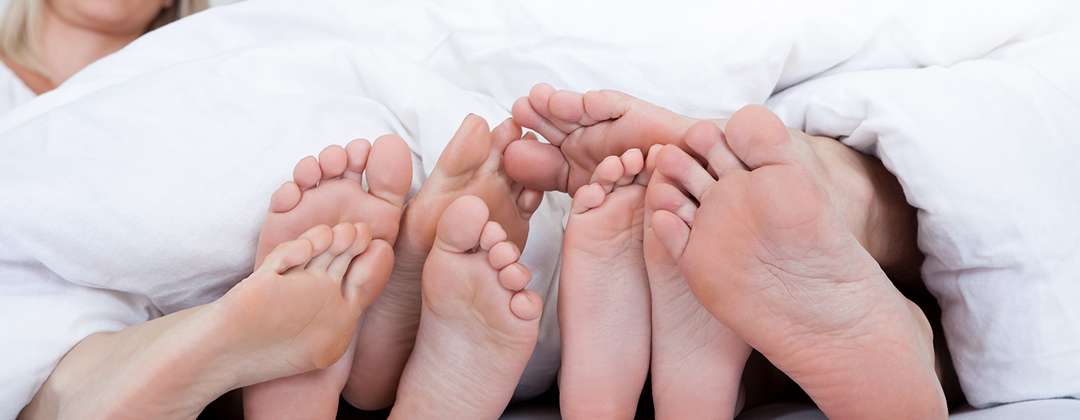More than half the population will at one time or another develop athlete's foot, a fungal infection on the skin of the feet. It causes itching, burning or scaling of the skin, especially between the toes or on the soles and can be malodorous. It can occur on moist, waterlogged skin usually between the fourth and fifth toes initially, or on dry, flaky skin around the heels or elsewhere on the foot. Large painful fissures can also develop and the condition can also spread along all five toes and sometimes to the soles of the feet if left untreated.
The fungus which causes Athlete's Foot is known as Tinea Pedis, it affects men more than women, and it becomes more common with older age. It can also occur in teenagers as excessive moisture and lack of airflow around the feet predispose people to infection with the fungus. To decrease your chances of contracting athlete's foot, avoid walking barefoot in around swimming pools, public changing rooms and showers, also keep feet clean and dry thoroughly between the toes.
Diagnosis
Your podiatrist will diagnosis athlete's foot after conducting a physical examination of your feet. In some cases a skin scraping is obtained to look for fungus under a microscope, or a culture is taken to grow and identify it.
If Left Untreated
If athlete's foot isn't treated, the infection may spread to your toenails, causing a fungal nail infection, or to other areas of your body, such as the palms of your hands.
The fungi that cause athlete's foot usually only grow on the surface of the skin. However, if your skin is cracked, other germs can enter it, leading to a more serious bacterial infection. Although uncommon, athlete's foot can lead to cellulitis, a more serious bacterial skin infection of the foot that can spread up the leg. Also Athlete's foot spreads very easily. It can be passed from person to person through contaminated towels, clothing and surfaces.
Treatment
Most cases of athlete's foot are mild and can be treated at home using self-care techniques (see below) and antifungal medication.
With effective treatment, athlete's foot usually only lasts for a few days or weeks. Antifungal medication clears the fungi that cause the infection. It's available as:
- Creams
- Sprays
- Liquids
- Powders
- Tablets
For more medical information click here.
Corns & Callus
When we walk or stand, our body weight is carried first on the heel and then on the ball of the foot, where the skin is thicker to withstand the pressure. When this pressure becomes excessive, some areas of skin thicken in the form of corns and callus.
More InformationPlantar Fasciitis
Plantar Fasciitis is one of the most common orthopaedic conditions relating to the foot. It is when the thick tissue on the bottom of the foot (plantar fascia) becomes inflamed and irritated at the points of insertion, making it difficult to walk.
More InformationIngrown Toenails
An ingrown toenail (known as onychocryptosis) can be caused by various factors such as trauma, incorrect footwear, infection, poor nail cutting technique and can even be hereditary.
More Information
